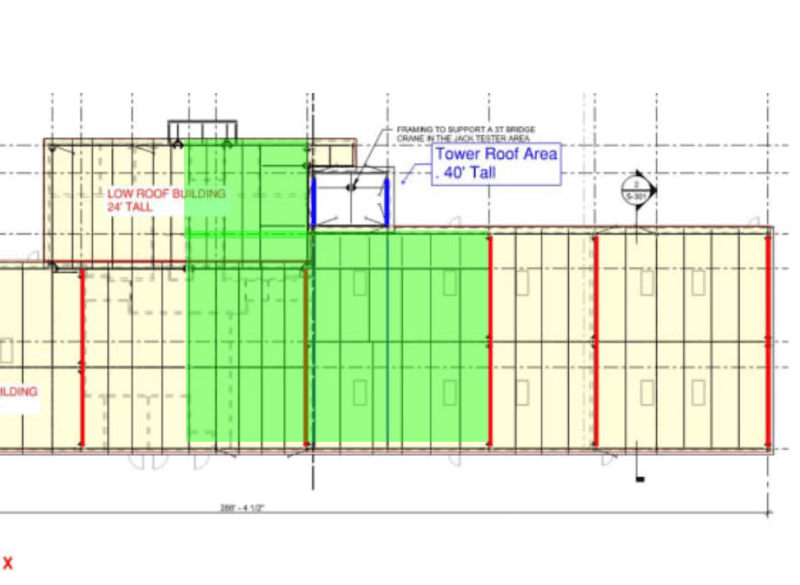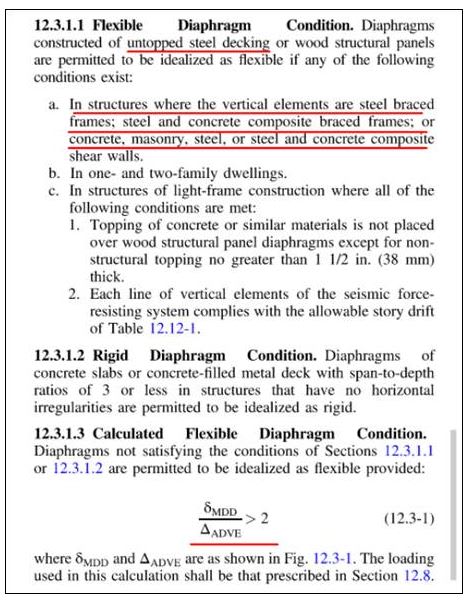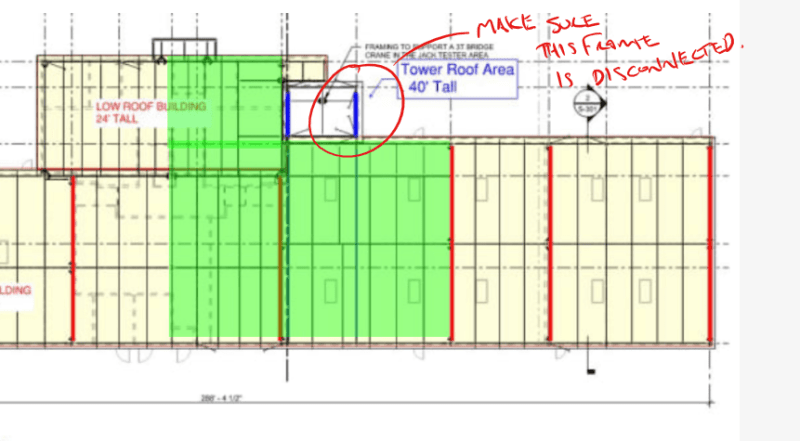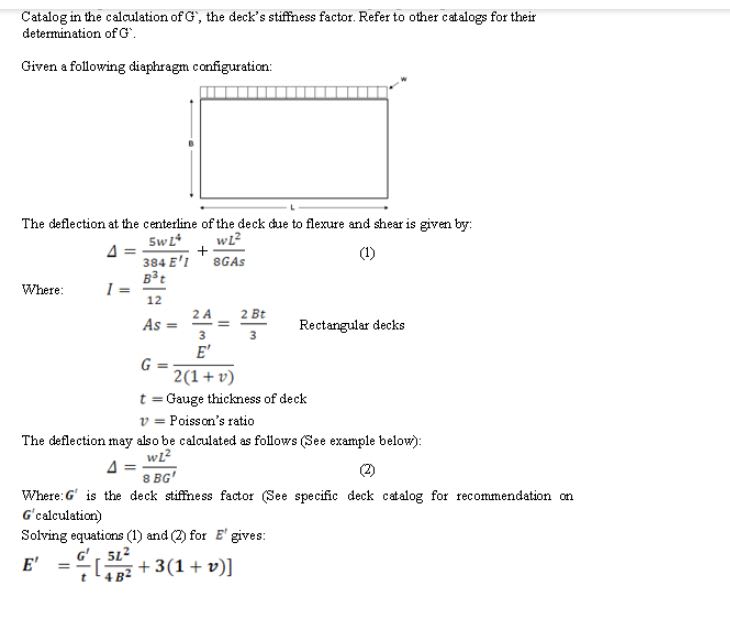Samwise, you don't seem to meet the code requirements to utilize the flexible diaphragm assumption, and it feels like you`re really struggling to let go of that assumption. I suggest that you model everything as semi rigid and accept those results, or phyiscally separate the tower as Canwest suggested.
If you take a look at 12.3.1.3, what is says is that when your diaphragm deflects twice as much as the average of your frames, you can assume flexible behaviour.
KootK said:
A flexible diaphragm on rigid VLFRS begets a diaphragm that behaves flexibly analytically.
Correct. The diaphragm is more much flexible that the frames, therefore flexible is appropriate.
KootK said:
A flexible diaphragm on a flexible VLFRS begets a diaphragm that behaves rigidly analytically.
I wouldn't say this is rigid behaviour, but the diaphragm is not flexible in this case. Both the stiffness of the diaphragm and the stiffness of the braces frames are important, therefore, a semirgid analysis that considers all of this is necessary. I think RAM SS is a good program for this effort.
nobody said:
A stiff diaphragm on a flexible VLFRS behaves rigidly analytically.
In this case load a rigid analysis is appropriate and load distributed based primarily on the stiffness of the VLRFS elements.
Samwise said:
...a semi-rigid analysis to get the braced frame force. Did you mean to say semi-rigid for moment frame force ?
Nope, I said it correctly. A semi rigid analysis is the most appropriate analysis to use, however, it sometimes predicts very low forces in the moment frame elements due to their low stiffness. Sometimes I will use a flexible analysis and envelope the two results in order to get higher design forces in the braced frames, that "feel" more correct to me. I would not use this methodology to lower the results of either analysis type.
Clearly you want less load in your tower - have you tried increasing the stiffness of your moment frames? The stiffer they get, they more load they`ll attract.






